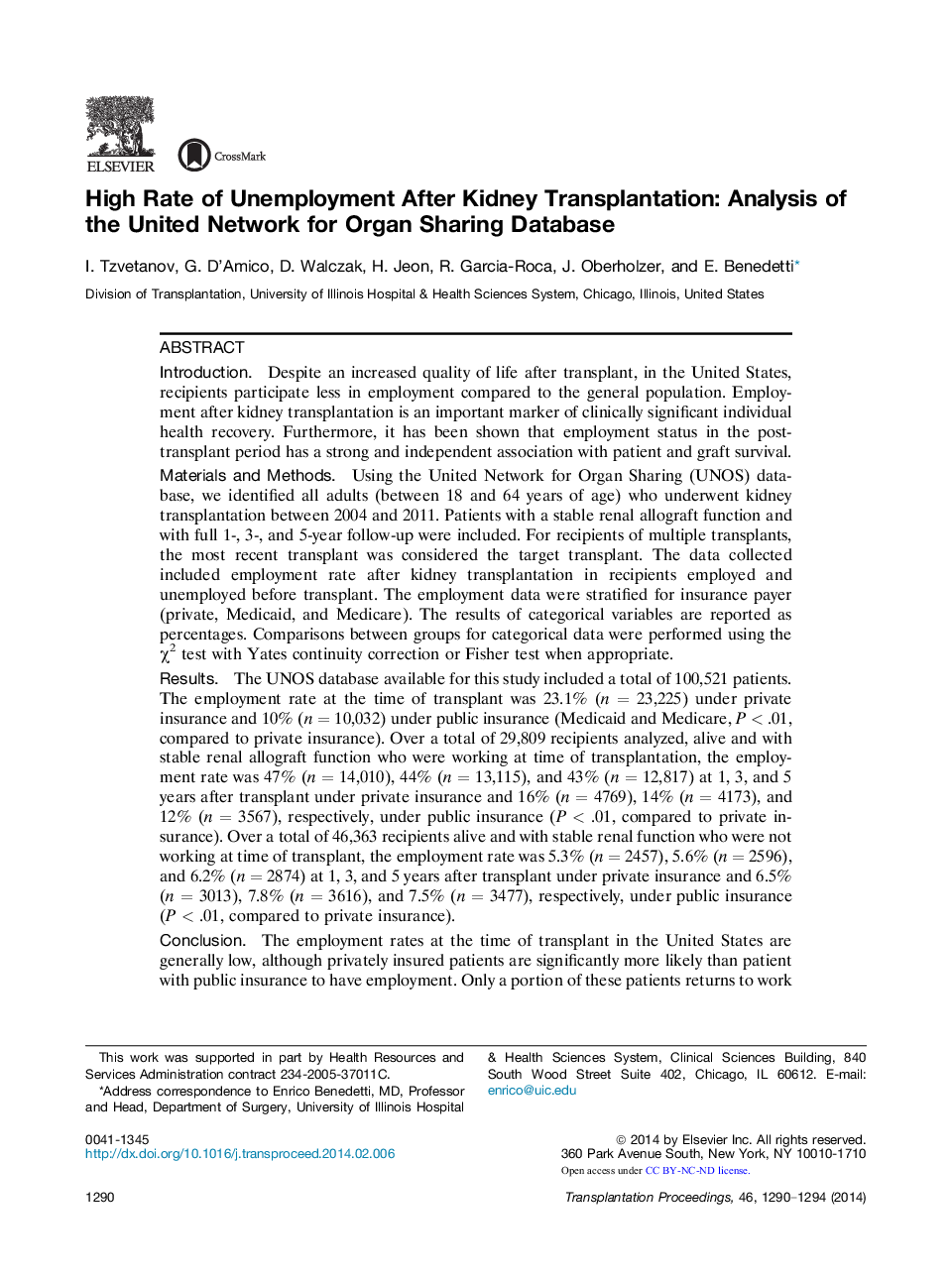| کد مقاله | کد نشریه | سال انتشار | مقاله انگلیسی | نسخه تمام متن |
|---|---|---|---|---|
| 6246236 | 1284488 | 2014 | 5 صفحه PDF | دانلود رایگان |
IntroductionDespite an increased quality of life after transplant, in the United States, recipients participate less in employment compared to the general population. Employment after kidney transplantation is an important marker of clinically significant individual health recovery. Furthermore, it has been shown that employment status in the post-transplant period has a strong and independent association with patient and graft survival.Materials and MethodsUsing the United Network for Organ Sharing (UNOS) database, we identified all adults (between 18 and 64 years of age) who underwent kidney transplantation between 2004 and 2011. Patients with a stable renal allograft function and with full 1-, 3-, and 5-year follow-up were included. For recipients of multiple transplants, the most recent transplant was considered the target transplant. The data collected included employment rate after kidney transplantation in recipients employed and unemployed before transplant. The employment data were stratified for insurance payer (private, Medicaid, and Medicare). The results of categorical variables are reported as percentages. Comparisons between groups for categorical data were performed using the Ï2 test with Yates continuity correction or Fisher test when appropriate.ResultsThe UNOS database available for this study included a total of 100,521 patients. The employment rate at the time of transplant was 23.1% (n = 23,225) under private insurance and 10% (n = 10,032) under public insurance (Medicaid and Medicare, P < .01, compared to private insurance). Over a total of 29,809 recipients analyzed, alive and with stable renal allograft function who were working at time of transplantation, the employment rate was 47% (n = 14,010), 44% (n = 13,115), and 43% (n = 12,817) at 1, 3, and 5 years after transplant under private insurance and 16% (n = 4769), 14% (n = 4173), and 12% (n = 3567), respectively, under public insurance (P < .01, compared to private insurance). Over a total of 46,363 recipients alive and with stable renal function who were not working at time of transplant, the employment rate was 5.3% (n = 2457), 5.6% (n = 2596), and 6.2% (n = 2874) at 1, 3, and 5 years after transplant under private insurance and 6.5% (n = 3013), 7.8% (n = 3616), and 7.5% (n = 3477), respectively, under public insurance (P < .01, compared to private insurance).ConclusionThe employment rates at the time of transplant in the United States are generally low, although privately insured patients are significantly more likely than patient with public insurance to have employment. Only a portion of these patients returns to work after transplantation. For the patients unemployed at the time of transplantation, the chance to find a job afterward is quite low even in privately insured patients. A concerted effort should be made by the transplant community to improve the ability of successful kidney transplant recipients to return to work or find a new employment. It had been shown that employment status in the post-transplant period has a strong and independent association with the graft and recipient survival.
Journal: Transplantation Proceedings - Volume 46, Issue 5, June 2014, Pages 1290-1294
